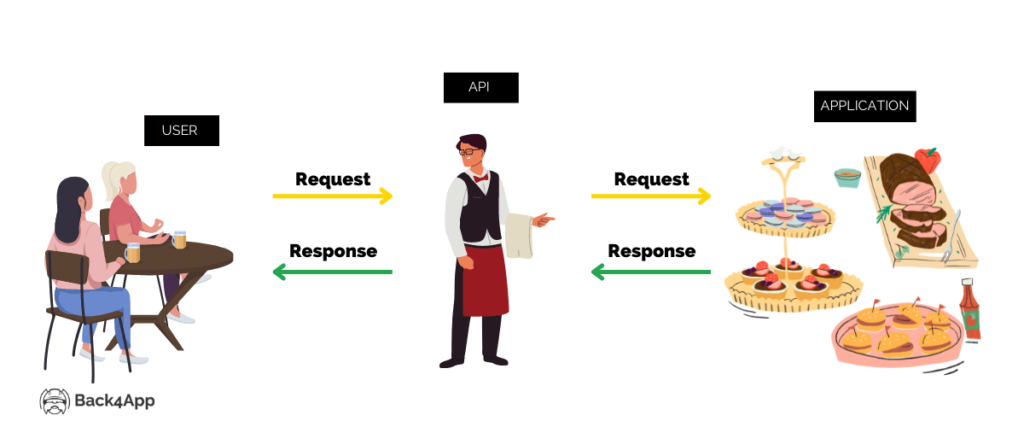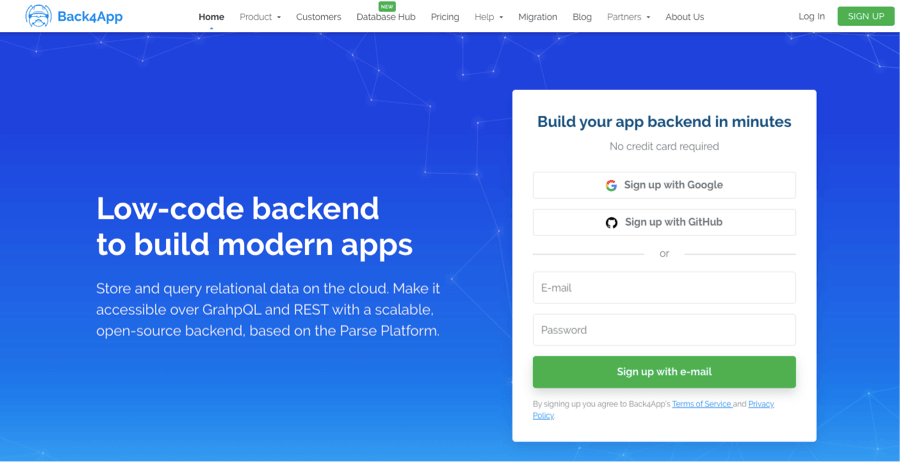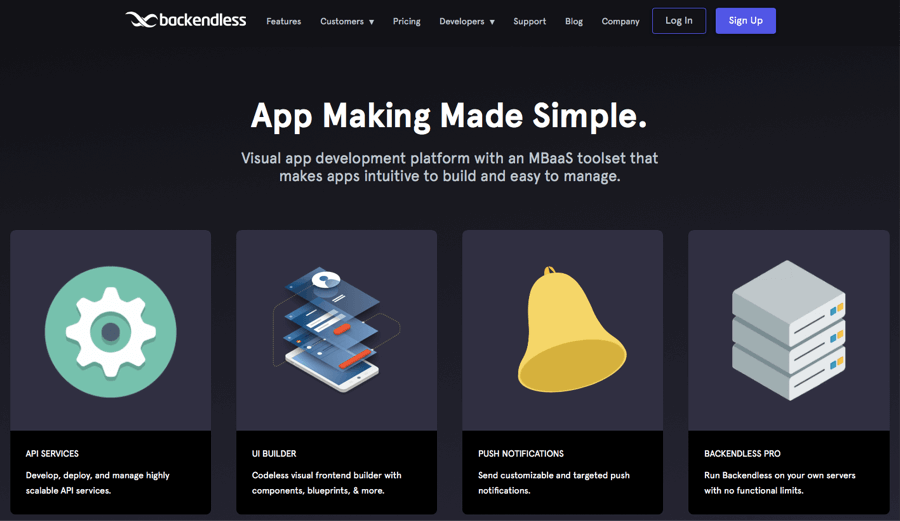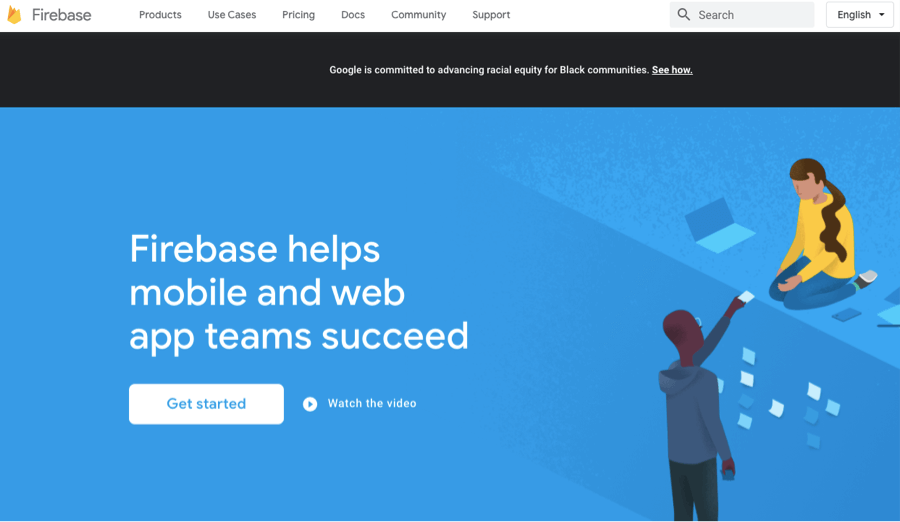What is an API service?
Web service and API are two of the most common yet overlapping tech terms that get confused regularly.
You also might have heard these words being used interchangeably. However, have you ever thought about whether these are the same things or there are any differences between both of these?
Even though these two terms do have some overlap, APIs and Web Services are generally two distinct concepts. Do you need a quick and straightforward explanation regarding Web services and API to understand their differences more clearly?
Let’s have a look at the description given below in this regard.
Contents
- 1 What is an API Application Programming Interface?
- 2 What are the advantages of using an API?
- 3 What are the most common API protocols?
- 4 What is a web service?
- 5 What are the differences between an API and a Webservice?
- 6 What are the best API services?
- 7 Back4app
- 8 Backendless
- 9 Firebase
- 10 Conclusion
- 11 FAQ
- 12 What is an API?
- 13 What is a Web Service?
- 14 What are the differences between and API and a Web Service?
- 15 What are the best API services?
What is an API Application Programming Interface?

The term API, also known as Application Programming Interface, is a set of protocols and definitions that can allow one application to communicate with the other application. It is a computing interface that is being used to define interactions between various software intermediaries.
It will define the kinds of requests and calls that can be made. It is an information gateway that will allow the software and services’ backend to communicate with each other.
Have you ever wondered before about how the modern digital experience is so interconnected? Well, the answer is API.
- It also provides extension mechanisms so that consumers can extend prevailing functionality in multiple ways as well as to varying degrees.
- An API can be specific to a component, custom, or even designed on the basis of an industry-standard to ensure interoperability. ‘
- APIs enable modular programming by hiding information. This can help users to utilize interface implementation independently.
- In application development, an API is meant to simplify programming by exposing actions or objects only and abstracting underlying implementations as per the needs of a developer.
In the world of technology, almost everything relies on a hidden network of Application Programming Interfaces, from data-driven marketing campaigns to the workflows of automated business and sprawling app ecosystems.
What are the advantages of using an API?
Well, there is a lot of talk about the importance of APIs that these can play to improve professionals’ experience. APIs are highly beneficial for developers and businesses alike. These can help developers to generate more potential in the best possible way.
However, do you want to know how APIs can benefit developers and businesses more effectively?
Let’s have a look at some of the essential advantages of using an API given below. This information will certainly let you have a clear idea regarding the importance of using an API.
So, here we go:
- Automation
APIs can let you manage your tasks via computers rather than using man force for these. APIs can help agencies to update their workflows to become quicker and more productive in the best possible way.
It can help you automate your manual tasks to generate an effortless and smooth transition between linked applications. Thanks to the automation that APIs bring, you will be able to save much of your efforts, cost, and time with ease.
- Customization is easier
APIs can let users customize their services as per their needs. Users will be able to add or remove functions or can analyze data as per their requirements.
With APIs, you will be able to make a custom suit for themselves, which can be modified or changed whenever needed.
- Flexible delivery of information
APIs can access the components of applications. Therefore, these can make the delivery of information and services more flexible and faster.
- Easier distribution of new services
APIs can simplify the implementation of new business models, applications, and digital products. Also, it can offer highly effective complementation with third-party services and products while improving development processes.
- Digital Transformation
APIs are fundamental to digital transformation and the development and creation of amazingly innovative business models. These are the foundations of business economics, which can be built better, faster, and at reduced costs.
- Easier integration
Lastly, APIs are the best way to embed or integrate services for other platforms.
An API can allow different applications, systems, and platforms to interact and share information with each other to carry out assorted types of tasks with ease. This is highly effective in streamlining specific processes more effectively.
APIs can also facilitate and simplify integration that can let multiple software identify their interrelationship as per the specific needs of a business.
With this, you can get better results while saving much on development costs.
What are the most common API protocols?
Here are three of the most common API standards that everyone must know:
SOAP
SOAP also stands for Simple Object Access Protocol and is probably better known among other protocols. However, this is basically a messaging protocol known for changing structured information in a computer network’s web services implementation.
- The purpose of SOAP is to offer neutrality, extensibility, independence, and verbosity.
- This protocol mainly relies on XML along with schemas that define it as a very strongly typed protocol for messaging.
- Each operation that is going to be defined by this service is defined explicitly, along with XML based request and response structure for a certain operation.
- Each input parameter here is bound and defined to a type such as string, integer, or any other complex object.
SOAP helps developers invoke processes running on different operating systems such as Linux, macOS, windows, etc., to authorize, authenticate, and communicate with XML (Extensible Markup Language).
Web protocols such as HTTP are running on almost every operating system; therefore, SOAP also allows its clients to invoke web services and get responses independent of platforms and languages.
REST
REST API Stands for Representational State Transfer, an architectural style for distributed hypermedia systems. Just like other architectural styles, REST API also has its own guiding constraints. You must satisfy these constraints if you want to refer to your interface as restful.
However, these six guiding constraints are enlisted below. Let’s have a look at these to know more about REST API:
- It has separated user interface concerns and data storage concerns to improve user interface portability across multiple platforms. Surprisingly, it also helped in enhancing scalability with server components simplification.
- Every server to a client request must contain the entire required information to make request understanding easier. However, the session state will be kept on the client completely.
- As per cache constraints, data within a request-response must be labeled as cacheable or non-cacheable.
- With a uniform interface, the system’s overall architecture is simplified, with improvement in interaction visibility. While REST is being defined by four interface constraints, including resource identification, resource manipulation via representations hypermedia as application stat engine, and self-descriptive messages.
- A layered system is meant to allow architecture to be composed of hierarchical layers with component behavior constraints. With this, every component can see within the layer it is interacting.
- REST API allows expanding client functionality via downloading and executing code in applets and scripts form.
GraphQL
GraphQL is a fantastic query language for APIs to fulfill those queries with the help of existing data. It can offer you an understandable yet complete data description in your API. It can give clients the strength to ask what they exactly want, nothing more.
Therefore, it can make it super easier and more convenient to evolve APIs whenever needed over time. At the same time, it enables a powerful developer’s tool as well.
- You can send GraphQL queries to an API to get what you want to know precisely. These queries return predictable results always.
- Applications based on GraphQL are generally faster and more stable because they do not control the data these applications are getting.
- These queries will not only access resource properties but also follow the references between them smoothly.
- GraphQL requests can bring the entire data that you need in one request only.
- These APIs used to work faster even with the slow internet connection as well.
These APIs are organized in fields and types rather than endpoints. Accessing your data’s full capability has become easier with these. These can also offer clear and more helpful errors with ease. While, types can let you avoid the hassle of writing manual parsing code.
What is a web service?
Different sources are offering different definitions for a web service. However, here we have tried to sum up a more comprehensive definition of a web service to make things clearer for you. So, here we go:
A web service is basically a piece of software available over the internet and utilizes a standardized XML messaging system. A web service encodes all the communications via XML.
It is a service that offers communication between different devices through WWW. Web technology, just like HTTP, is being used to transfer machine-readable file format in a web service such as JSON and XML.
However, practically, a web service provides a web-based object-oriented interface to a database server utilized by any other web server or mobile application that is providing a user-interface to the end-user.
To allow syndication, many businesses providing data or information in formatted HTML pages will provide data in JSON or XML format as well on their servers.
What are the differences between an API and a Webservice?
Basically, both web service and API are known as an effective source of communication. However, the major difference between these two is:
- An API plays a role of an interface between different applications to let them communicate with each other in a more effective way.
- While, on the other hand, a web service is meant to facilitate communication between two devices or machines over a network.
However, other differences between API and web service are enlisted below:
- All the web services can be used as APIs, while you can’t use every API as a web service.
- A web service can’t perform all operations that you can do with an API.
- An API can utilize any style of communication.
- A web service always requires a network connection to perform well, but an API doesn’t.
- APIs usually contains interfaces and classes, just like a program.
- An API can help computer programmers in establishing a connection between different software applications.
What are the best API services?
Have a look at some of the best API services that you can consider to utilize in your coming application development projects with ease:
Back4app

Back4app is an open-source low-code backend that offers developers an easier way to access standardized APIs.
It can help them to integrate their required APIs to their applications and enjoy faster development processes with ease.
The advantages, such as saving time, money, and efforts with the help of Back4app APIs during your app development, are worth considering. It is a good choice for web apis, mobile apis, and public apis.
Backendless

Backendless is offering access to a complete toolkit based on SDKs and APIs to help developers manage their application development process in the best possible way.
This service can help them integrate real-time databases and build an Android and iOS application within no time. API management is easy with Backendless and it is a great option to consider.
Firebase

Firebase is a mobile platform that is backed by Google. It can help you to develop high-quality applications quickly.
It offers an array of easier to integrate and APIs for iOS, web, and Android as well. Even more, you can also deliver cross-platform applications with ease. More amazingly, Firebase APIs have been packaged into one SDK to expand to more platforms, and languages can become easier for you.
Conclusion
So, that’s all that you need to know about a web service and an API. Indeed, you have gotten a clear idea about each term. Now you can choose any of these services based on your application requirements with ease.
FAQ
What is an API?
API, also known as Application Programming Interface, is a set of protocols and definitions that can allow one application to communicate with the other application. It is a computing interface that is being used to define interactions between various software intermediaries.
What is a Web Service?
A web service is basically a piece of software available over the internet and utilizes a standardized XML messaging system. A web service encodes all the communications via XML.
What are the differences between and API and a Web Service?
– All the web services can be used as APIs, while you can’t use every API as a web service.
– A web service can’t perform all operations that you can do with an API.
– An API can utilize any style of communication.
– A web service always requires a network connection to perform well, but an API doesn’t.
– APIs usually contains interfaces and classes, just like a program.
– An API can help computer programmers in establishing a connection between different software applications.
What are the best API services?
– Back4app
– Backendless
– Firebase



